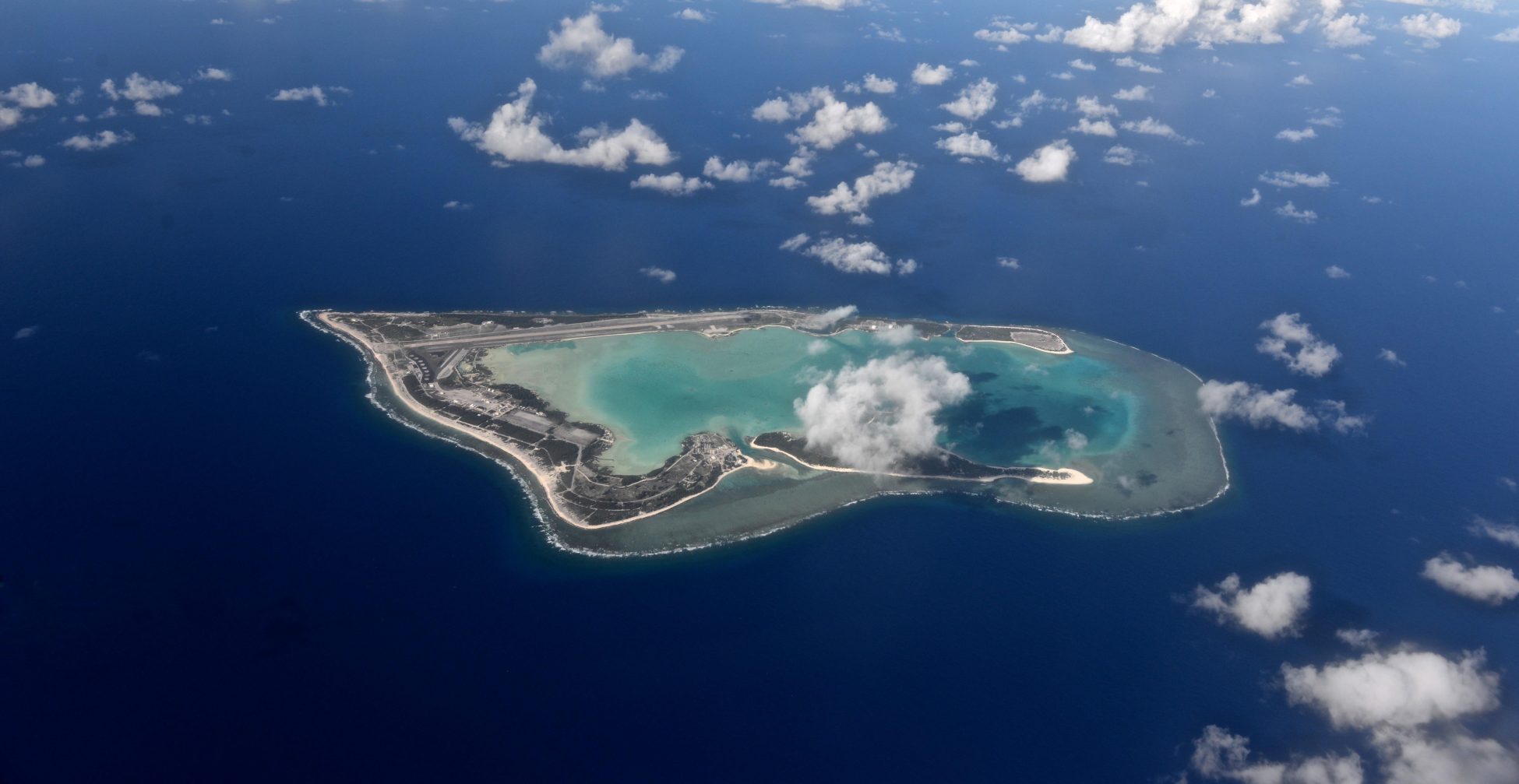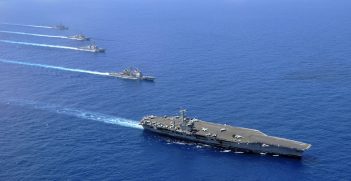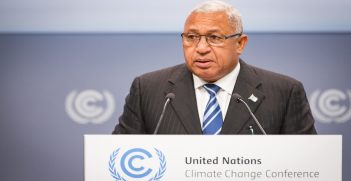Rising Seas and Pacific Maritime Boundaries

Sea level rise is on the agenda for the Pacific Island Forum this week. Pacific Island states are already developing a legal solution.
Sea level rise is predicted to exceed 98 cm or more by 2100. This has significant implications for maritime boundaries as islands are either submerged or become rocks and, in extreme cases, atoll island states are lost altogether. Sea level rise is likely to have a disproportionate impact in the Western Pacific where since 1993 it has risen three times the global mean. Low-lying islands such as Kiribati, Tuvalu and the Marshall Islands are particularly vulnerable. How can these states preserve the full entitlement of their maritime zones in the face of sea level rise as a consequence of climate change to which these states have made a negligible contribution?
The problem
Under the law of the sea, codified in the 1982 United Nations Convention on the Law of the Sea (UNCLOS), maritime zones are measured from baselines, which are identified using the low-water line along the coast or other geographical features such as rocks, low tide elevations and reefs (Articles 5, 6 and 13). UNCLOS also provides for the use of ‘straight baselines’ where a coastline is highly indented or in the case of bays and river mouths (Articles 7, 9 and 10). The traditional interpretation of UNCLOS by states, commentators and, most recently, the International Law Association Baselines Committee is that the normal baseline is ‘ambulatory’. In other words, the baseline will move in response to geographical changes in the coastline. This reflects the traditional principle of maritime delimitation: the land dominates the sea. The application of the ambulatory principle means that as sea level rises and basepoints are inundated, maritime zones in the Pacific and elsewhere will get smaller or possibly disappear altogether.
A solution
A solution which has been favoured by some commentators since the early 1990s – and endorsed by the International Law Association Committee on Sea Level Rise and International Law in 2018 – is ‘fixing’ established baselines, maritime zones or both and eliminating any requirement to recalculate those maritime limits in light of subsequent sea level rise. Ten options for ‘fixing’ or ‘maintaining’ maritime zones have been proposed by experts ranging from: physically reinforcing the coastline; formally promulgating charts with fixed baselines; interpreting UNCLOS to permit fixed baselines; recognising the historic rights of states; developing a general customary norm permitting fixed baselines; adopting a protocol to the 1992 United Nations Convention on Climate Change (UNFCCC); adopting a decision of the parties to UNCLOS; amending UNCLOS; adopting a new agreement under UNCLOS; and adopting a United Nations General Assembly resolution.
A regional solution
However, Pacific Island states are already developing a regional solution to sea level rise and maritime boundaries. Eight Pacific states – Marshall Islands, Cook Islands, Fiji, Kiribati, Nauru, Niue, Palau and Tuvalu – have already adopted legislation purporting to ‘fix’ their maritime limits and other states are developing legislation through the Pacific Maritime Boundaries Project. Collectively, Pacific Island states have advocated for or asserted a right to fix baselines in public statements such as the 2010 Framework for a Pacific Oceanscape, the 2015 Taputapuātea Declaration on Climate Change and the 2018 Delap Commitment on Securing Our Common Wealth of Oceans.
Future steps
Where do we go from here? Building on regional practice in the Pacific I propose two legally imperfect but pragmatic options for fixing or maintaining Pacific maritime boundaries.
First, Pacific Island states may conclude an agreement modifying UNCLOS pursuant to Article 311(3) and Article 41 of the 1969 Vienna Convention on the Law of Treaties to permit fixed baselines notwithstanding sea level rise. Article 311(3) of UNCLOS sets out three conditions for modification agreements. A Sea Level Rise Pacific Agreement would arguably not be contrary to these. Admittedly in theory, the rights of third states in the future may be affected because fixing the baselines will also ‘fix’ the areas of high seas available to traditional freedoms such as fishing. Since Article 311(3) modification agreements are in principle applicable solely between the parties this presents a problem for a proposed Pacific Agreement as maritime zones need to be opposable to all states. However, if the obligations of third states under UNCLOS and under the 1992 UNFCCC are considered holistically, with particular emphasis on the obligation of the international community to support adaptation, it can be argued that third states should recognise such a modification agreement. The process for modification (in contrast to amendment) is quick and simple and preserves the rights of third states in that they can object. Such an agreement might operate as a pragmatic first step in the interpretation or amendment of UNCLOS permitting fixed baselines globally in the face of sea level rise.
Second, Pacific Island states could develop a regional customary norm permitting fixed baselines. Regional customary law is uncommon but there is no reason in principle why it cannot be established here on the basis of state practice and opinio juris (belief that the right is permitted under the law). There is already significant evidence of state practice and emerging opinio juris providing the basis for a customary norm, and it is suggested that Pacific Island states make bolder statements asserting that they have such a right in order to strengthen this practice. The key challenge again is ensuring a regional norm is opposable to third states. This is not automatic, but for the reasons mentioned above, nations such as Australia, New Zealand and the international community more generally should recognise and acquiesce to this practice, which is consistent with their obligations to support the adaptation of Pacific Island states to climate change under the 1992 UNFCCC and the 2015 Paris Agreement.
Karen N. Scott is a Professor of International Law at the University of Canterbury in New Zealand. This is an adaptation of a paper presented at the 78th Biennial International Law Association Conference held in Sydney 19–24 August 2018.





